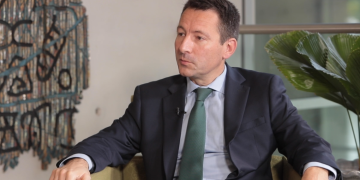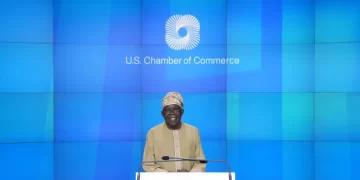The International Monetary Fund (IMF) raised its growth estimate for China for the second time this year while also cautioning that deep reforms are still needed to break away from debt-fueled expansion.
The world’s second-largest economy will expand by 6.7% in 2017, the Washington-based fund said in its annual report on Article IV consultations published on Wednesday. That’s up from a 6.6% estimate in the economic outlook released in April and 6.5% forecast in January.
It’s unusual for the IMF to update forecasts outside of its scheduled global economic outlook series, though officials have signaled that a strong first quarter hadn’t fully been reflected in earlier releases. IMF First Deputy Managing Director David Lipton said in a statement Wednesday that China should use its current momentum to push reforms through.
“While some near-term risks have receded, reform progress needs to accelerate to secure medium-term stability and address the risk that the current trajectory of the economy could eventually lead to a sharp adjustment,” Lipton said in Beijing after meetings with top policy makers.
“It is critical to start now while growth is strong and buffers sufficient to ease the transition.”
China has proved doubters wrong this year with the first back-to-back growth acceleration in seven years in the first quarter, though economists project slower expansion in the second half while still meeting the government’s 6.5% full-year growth objective.
Policy makers also have been clamping down on frothy property markets with new curbs, which was reflected in data on Wednesday showing property development investment slowed.
Authorities responding
IMF staff warned last year that China’s medium-term outlook is clouded by ongoing resource misallocation, high and rising corporate debt, deep-seated excess capacity, and opaque risks in the financial sector. The Article IV report said the authorities are responding to these challenges.
The IMF’s policy prescriptions include: “switching faster from investment to consumption; increasing the role of market forces; implementing a more sustainable macro policies mix, continuing the regulatory tightening; tackling non-financial sector debt; and further improving policy frameworks.”
–
Credit: Fin24










































